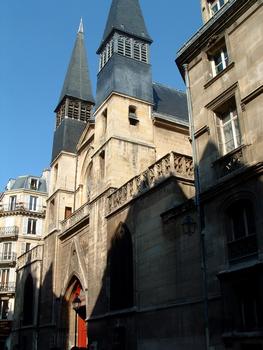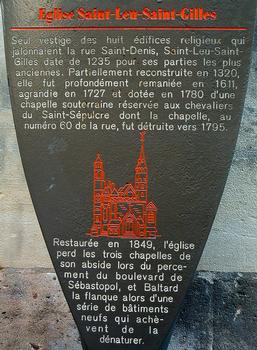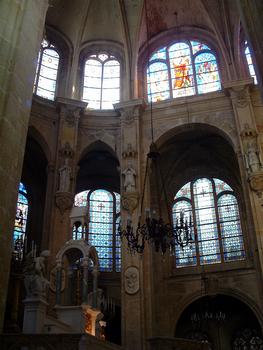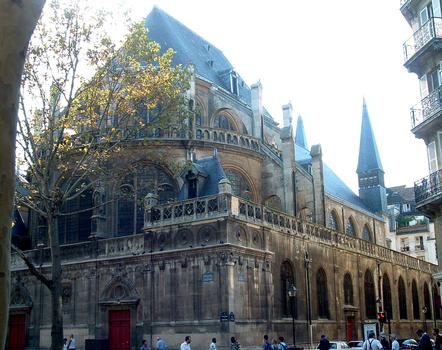General Information
Project Type
Location
| Location: |
Paris ( 1st), Paris, Ile-de-France, France |
|---|---|
| Address: | 92 bis, rue Saint-Denis |
| Coordinates: | 48° 51' 46" N 2° 21' 0" E |
Technical Information
There currently is no technical data available.
Excerpt from Wikipedia
The Église Saint-Leu-Saint-Gilles de Paris is a Roman Catholic parish church in the 1st arrondissement of Paris. It has housed the relics of the Empress Saint Helena, mother of Constantine, since 1819, for which it remains a site of veneration in the Roman Catholic and Eastern Orthodox churches. In 1915 the French Ministry of Culture listed it as a monument of historical value.
History
Construction of the church began in 1235. Since then, the building has undergone several major renovations and modifications, notably in 1320, 1611, 1727, and 1780, when an underground chapel was added.
In 1819 the relics of Saint Helena were transferred to the church from the Abbaye Saint-Pierre d’Hautvillers by the knights of the Order of the Holy Sepulchre.
When Boulevard de Sébastopol was cleared in 1857, the church’s three chapels and apse were destroyed. A renovation project was undertaken by architects Étienne-Hippolyte Godde and Victor Baltard.
In 1875, after the Paris Commune, the reliquary of Saint Lupus of Sens was opened in order to carry out an anatomical analysis of the remains of Saint Helena. Based on the medical findings, Monsignor Richard, Archbishop of Paris, announced that the “reliquary contained the almost-complete torso of Saint Helena”, that “the head was missing and the limbs compressed”, and that “the state of the body conserved in the reliquary of the Église Saint-Leu-Saint-Gilles corresponded to the descriptions known to the Bollandistes in the 18th century”. The reliquary was subsequently placed on open display above and behind the high altar, at the feet of the large crucifix, suspended between two pillars of the apse.
On 16 October 1928, Cardinal Dubois, Archbishop of Paris, held a ceremony in the church for the “Reintegration of the Knights of the Holy Sepulchre”. The building was subsequently made chapter house of that order.
On 17 March 2000 the relics of Saint Helena were transferred to the crypt of the order’s knights, making them more easily accessible for veneration. The first Eastern Orthodox liturgy was celebrated before the relics of Saint Helena on 22 February 2003.
The church is now managed by the Trinitarian Order. It pays particular attention to the homeless of its neighborhood, Les Halles.
Architecture
The church is built in the Gothic style. Its forward façade is surmounted by two turrets.
The church’s single nave counts numerous stained-glass windows. It is flanked by aisles, but the church has no transept.
Organs
The church’s organs date to 1788, the work of François-Henri Clicquot. Restored in 1983, they are now protected as national historical monuments (declaration of 20 May 1915).
Text imported from Wikipedia article "Saint-Leu-Saint-Gilles de Paris" and modified on 21 February 2022 according to the CC-BY-SA 3.0 license.
Participants
Currently there is no information available about persons or companies having participated in this project.
Relevant Web Sites
Relevant Publications
- (2005): Paris. Mille monuments. 1st edition, Editions Mengès, Paris (France), pp. 38-39.
- (2008): Reconnaître Paris d'église en église. Massin, Paris (France), ISBN 978-2-7072-0583-4, pp. 26-28.
- About this
data sheet - Structure-ID
20013255 - Published on:
08/09/2004 - Last updated on:
28/05/2021











